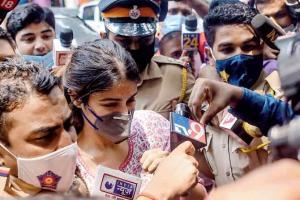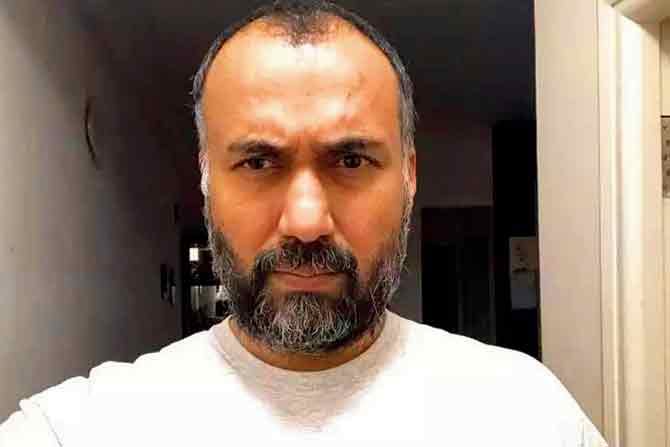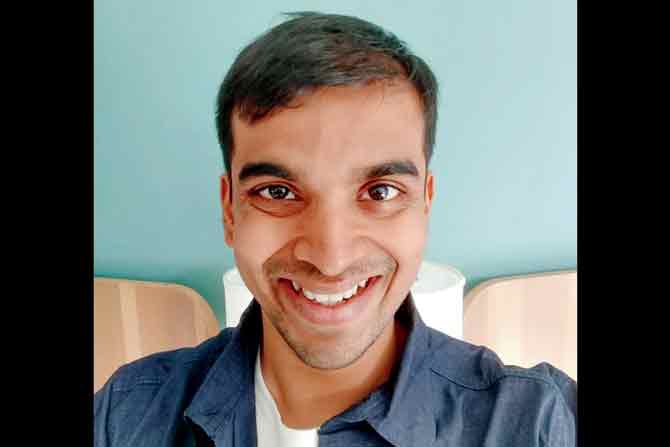A group of social media researchers who chose to examine the role of rumour in actor Sushant Singh Rajputs death say that demand and supply drives toxic narratives

Rhea Chakraborty was given bail last week in a drugs procurement case against her, after being in jail for nearly a month. Doctors from AIIMS said that it found no evidence of foul play in Sushant Singh Rajput's death. Pic/ Getty Images
Sushant Singh Rajput's death by suicide shook the entire nation. We seemed ill equipped to accept the loss of a superstar who appeared to have everything going for him. Certain television channels went into overdrive and multiple theories cropped up. Rajput's girlfriend, Rhea Chakraborty, and her family were accused of siphoning off his money, and even poisoning him.
ADVERTISEMENT
It has now emerged, that most allegations were made without any evidence. Yet, thousands of viewers believed what the rumour mills churned out on social media each day. Why?

Syeda Zainab Akbar
To find the answer, a group of social media researchers—Syeda Zainab Akbar, Ankur Sharma, Himani Negi, Anmol Panda and Joyojeet Pal—collaborated in July to study the media content surrounding Rajput's unfortunate demise. They had just completed a study on the spread of misinformation during the COVID-19 lockdown and felt that the patterns in the reportage around Rajput's death, the timing and style of false facts, would show differences between misinformation around a health issue and an issue involving a celebrity. "Once we started looking at the story, it became a lot more complex. We got sucked deeper. It ended up becoming a full-length paper," said Pal, an associate professor of information at the University of Michigan.

Joyojeet Pal
The researchers created a detailed timeline of all the key events, news coverage, Twitter activity and key persons who were discussed in the news. They studied social media data spanning three months, from June 14 to September 12. Over 7,000 YouTube videos and tweets from about 12,000 politicians and 3,200 media professionals formed a part of their study. They also mapped out the misinformation debunked by fact checkers. They wanted to see who was engaging with Rajput's death the most, how and when. They extracted textual data from said tweets to understand the content that was being posted.
 Ankur Sharma
Ankur Sharma
"At first, the television channels talked about mental health. Within a week, some channels had started talking about a conspiracy. By mid-July, there was a systematic targeting of the Mumbai Police and the Maharashtra government," explained Pal, adding that although it looked like Rajput's death would become a talking point during the campaigning for the upcoming Bihar elections, politicians from the state didn't pursue the issue. What politicians did do was change the discourse around the case by referring to it as 'murder' rather than 'suicide'. "After mid-July, it became pointedly about Rhea. By August, the targeting moved to Bollywood's drug problem," added Pal.

Himani Negi
The viewers and their engagement are to be blamed, too. Pal and the others found that viewers consistently gave higher viewing to stories about Rajput on YouTube and Twitter. "In other words, the Indian public is definitely into this story, and the media is reacting to that," said Pal. Demand and supply interacted with each other to give rise to a range of toxic narratives surrounding Rajput's death, one of them being that the people around him were responsible for his demise.

Anmol Panda
The researchers also found that the vast majority of victims—people whose lives, reputations, privacy were, and continue to be, impinged upon during the coverage—are women. Chakraborty, for instance, was called a gold digger, a black magician, a harlot and more. "Even though similar suicides have occurred in the past, involving actresses, they never got the kind of traction Rajput's did," noted Pal. For instance, take the deaths of Pratyusha Banerjee and Jiah Khan. Both died by suicide.
Speaking truth to power is not an easy task, though. Pal and the other researchers are being viciously trolled on Twitter. "We have already been doxed," said Pal, adding that although they expected some backlash, they didn't anticipate it would be this intense.
The researchers also found that the vast majority of victims—people whose lives, reputations, privacy were, and continue to be, impinged upon during the coverage—are women. Chakraborty, for instance, was called a gold digger, a black magician, a harlot and more. "Even though similar suicides have occurred in the past, involving actresses, they never got the kind of traction Rajput’s did," noted Pal. For instance, take the deaths of Pratyusha Banerjee and Jiah Khan. Both died by suicide
Keep scrolling to read more news
Catch up on all the latest Mumbai news, crime news, current affairs, and a complete guide from food to things to do and events across Mumbai. Also download the new mid-day Android and iOS apps to get latest updates.
Mid-Day is now on Telegram. Click here to join our channel (@middayinfomedialtd) and stay updated with the latest news
 Subscribe today by clicking the link and stay updated with the latest news!" Click here!
Subscribe today by clicking the link and stay updated with the latest news!" Click here!







